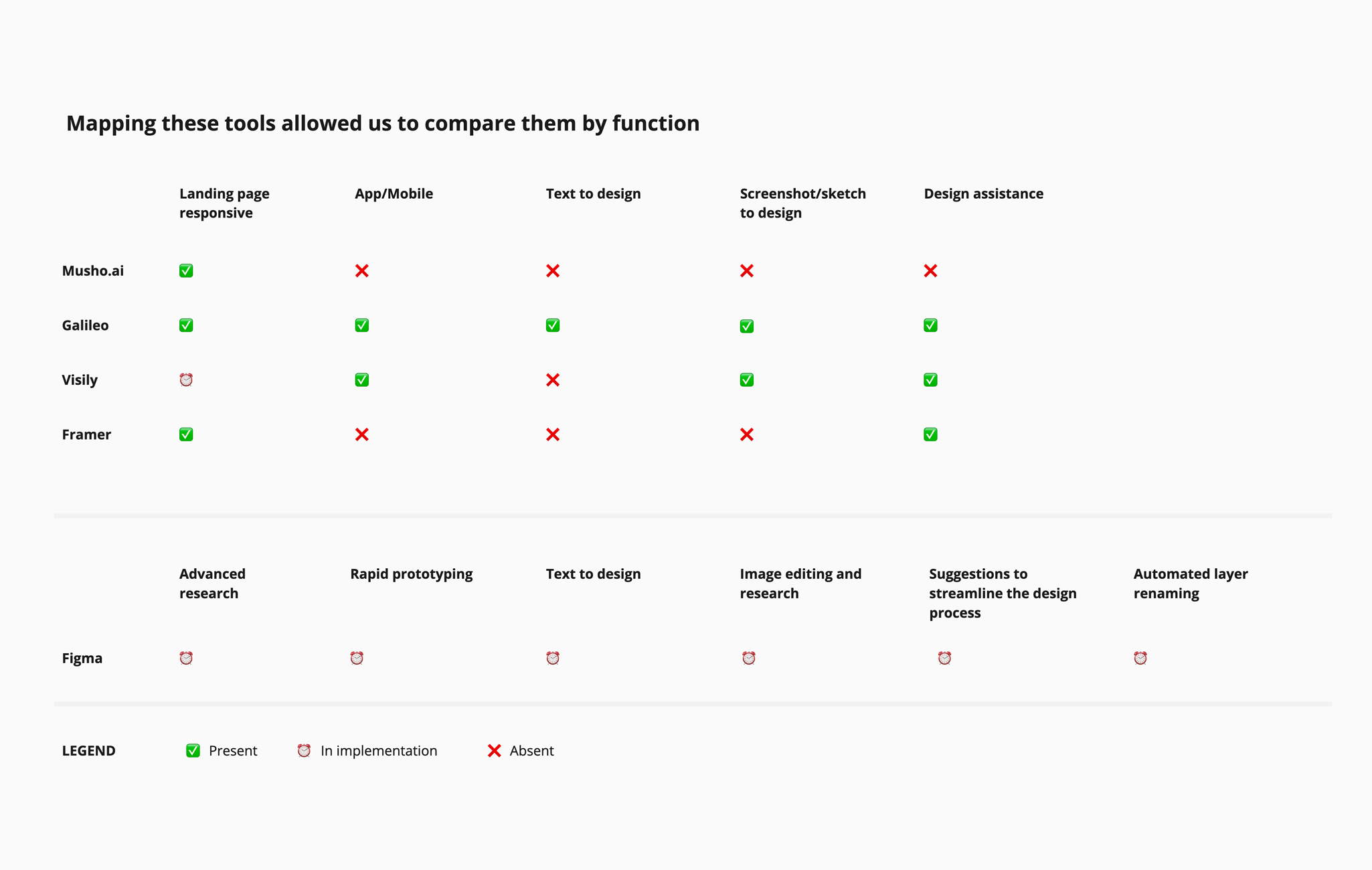The algorithm meets design:
user interfaces in the age of AI
“Something’s happening” in the world of User Experience, and beyond! Since the founding of OpenAI in 2015, many things have changed and will continue to evolve more and more.
The original goal of the research, “Promotion and development of a friendly artificial intelligence (AI) in such a way that humanity can benefit from it”, has received a lot of praise from the outset, as it has also brought to light one of the most interesting and revolutionary innovations of the last decade. Starting with the success of ChatGPT, various chatbots and AI-based tools have been created to support and improve activities in different fields: work organization and management, knowledge sharing, and automation to detect and correct bugs and vulnerabilities in coding.
Additionally, artificial intelligence has been integrated into already existing tools to offer more services to users, such as Canva, a platform for creating graphic assets, which has implemented AI functions to rework texts, speeding up processes and suggesting creative ideas to users.
How can AI be useful to those designing interfaces?
What is meant by User Interface Design (UI)? It is a discipline that deals with designing and developing the user interface of a digital product, such as a website or mobile application. Its main goal is to make the interaction with the product intuitive, effective, accessible, and aesthetically pleasing.
UI designers use color, typography, shapes, spacing, images, and other dynamic and interactive elements to improve the user experience, meaning designing a digital touchpoint that can be easily used by any type of user (including people with visual, auditory, physical, cognitive disabilities…).
To ensure visual and semantic consistency, these elements are collected in a Design System: an organized set of principles, guidelines, and components on which the entire design is based, allowing an efficient development and product scalability.
How does artificial intelligence fit into such a complex discipline?
AI is not only used to generate images: Fontjoy, for example, is a website that uses artificial intelligence to generate font combinations, while Colormind is a color scheme generator that uses deep learning, starting from an initial image: after uploading, it can generate infinite color combinations.
AI can also create digital interfaces with the simple insertion of prompts.
Galileo AI, which visually resembles ChatGPT, is a platform that mainly allows the generation of web pages from a description. To achieve a better result, it is recommended to indicate design goals or detail the characteristics of the desired appearance, image tones, specific colors, font types, and even the level of roundness for the call-to-action buttons.

Galileo UI output aftern inserting a text prompt
While these new features are undoubtedly a major step forward, the generated output is partial and not fully faithful to the request. No matter how detailed the prompt is, artificial intelligence (still) struggles to deliver a ready-to-use result, although the elements are often coherent and with the right hierarchies.
Other design software, in addition to generating digital interfaces from prompts, offers other useful functions. Framer provides powerful features to enhance textual content: text rewrite improves written texts, AI style modifies texts with a specific tone of voice, and AI translation quickly translates them while improving the overall user experience.

Before and after using “text rewrite” feature in Framer
Visily, on the other hand, offers other advanced AI-driven features such as screenshot to Design (upload screenshots of any application/website or pen-and-paper sketches to see them transformed into editable artboards) and design assistance (quickly changing images or filling with placeholder text based on functionality). It recently introduced the Text to Design feature, which is interesting but still in its early stages.

Screenshot to Design feature on Visily. On the left, the screenshot; on the right, the editable artboard.

Lastly, but no less important, we mention Figma, a platform for graphic editing and interface design, that is our day-to-day working tool. It has recently introduced its own AI-based features:
- Enhanced component search
- Tool for editing and searching images
- Suggestions for improving design efficiency
- Rapid prototyping
- Automation in renaming all components present on screens
- Text-to-Design
These features have been released in beta mode to a limited number of users. We hope to use them soon, as theoretically, some of them could be a turning point to significantly accelerate everyday work and expand creative possibilities.
The tools presented here are just some of those available on the market, those we considered to have the most potential, but we expect their number to increase more and more.
Is AI really an ally for UI designers today?
It is important to note that, at present, AI can produce partial outputs: human intervention is still essential to ensure design quality, manage complex requests, and make creative and strategic decisions.
AI can be useful for providing stimuli, quickly producing concepts, and suggesting the look & feel of digital interfaces: it can therefore be considered an inspirational and automation tool.
Certainly, in the near future, we expect significant advancements, with more refined and useful tools and functionalities for design, such as predictive analysis of the usability of digital products using machine learning techniques.
AI will need to go in this direction to allow designers to make their work faster and more efficient: automating repetitive tasks, assisting in the creation of accessible content, detecting major design errors, and optimizing processes for defining a solid and coherent design system.
Thus, we will need to wait a little longer before AI-based technologies can truly support us, but we predict that their use will become indispensable in our creative toolkit, greatly changing our daily productivity.
The result? More satisfied designers, faster work, and, consequently, the ability to achieve better and more surprising results.
Authors
Fabio Satriano e Francesca Musicco

 18 September 2024
18 September 2024
